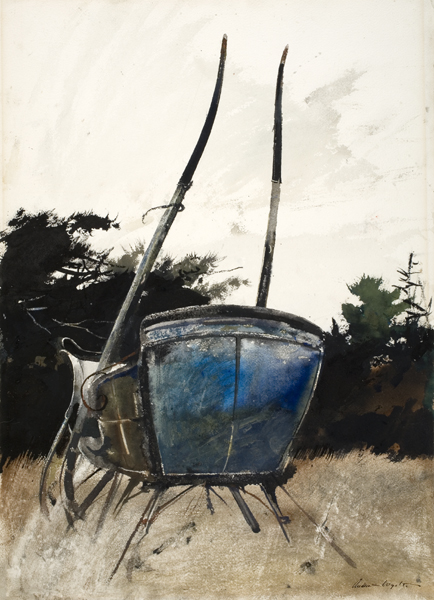The Cutter

The art of Andrew Wyeth is often described by the qualities it rejects, rather than by those it embodies. A representational artist working in the middle of the twentieth century, he was often criticized for the apparent realism of his style and the traditionalism of his subject matter, neither of which conformed to the contemporary critical preferences for abstraction. Close study of his work, however, makes it clear that Wyeth was not interested in illusionistic realism or in simple nostalgia. His style is rooted in careful observation, and transcends reproduction in an effort to create a powerful emotional impact.
The 1952 watercolor, The Cutter, is typical of Wyeth’s work in its melancholy evocation of the isolation which the artist perceived in his surroundings. He often used watercolor when he wanted to avoid superfluous detail and to convey the subtleties of a scene most directly; in this work he dispenses with precision in favor of a quick, loose execution which he felt better expressed the innate qualities of his subject. In Wyeth’s treatment the sleigh is neglected, left open to the elements and the weathering of passing seasons. It lies horseless, abandoned, and rusting; its sense of displacement underscored by lack of use. The image immediately evokes a sense of the cruelty of progress, as a cause for both the cutter’s apparent obsolescence and for its dilapidated state.
The outdated equipment is just one casualty of the unrelenting passage of time, a force which fascinated Wyeth. In his work, objects are rarely what they seem, and here, the sleigh, removed from its functional context and left in an otherwise barren landscape, acts as a marker for the conspicuous absence of the people who have used and abandoned it. It is this eerie sense of human desertion — rather than mere sentimentalism for a rural past — which gives the work its deep emotional resonance.
Megan Garratt-Reed ’11
Student Curatorial Assistant